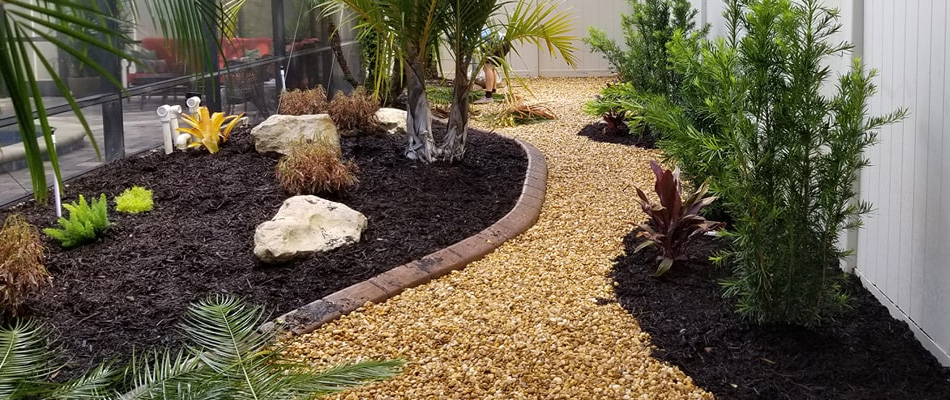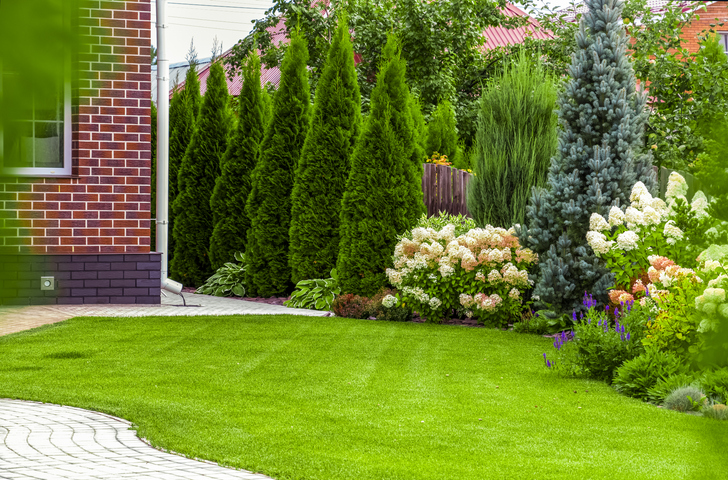The Hilton Head Landscapes Ideas
The Hilton Head Landscapes Ideas
Blog Article
How Hilton Head Landscapes can Save You Time, Stress, and Money.
Table of ContentsThe Ultimate Guide To Hilton Head LandscapesHilton Head Landscapes Things To Know Before You Get ThisAbout Hilton Head LandscapesSome Known Details About Hilton Head Landscapes Some Of Hilton Head Landscapes4 Easy Facts About Hilton Head Landscapes Shown7 Simple Techniques For Hilton Head Landscapes
Line produces all types and patterns and can be utilized in a selection of ways in the landscape. Line in the landscape is developed by the side between two materials, the outline or silhouette of a kind, or a long linear attribute. Lines are a powerful device for the developer due to the fact that they can be made use of to produce an unlimited range of forms and types, and they manage movement of the eye and the body.

Lines can have several characteristics, such as those defined listed below, however they usually serve different purposes. Number 1. Lines in the landscape - hilton head landscapers. The buildings of lines determine just how individuals respond to the landscape, both psychologically and physically. Straight lines are architectural and forceful; they develop an official character, are generally connected with a balanced style, and lead the eye straight to a focal point.
Little Known Facts About Hilton Head Landscapes.
Straight lines are frequently found in hardscape edges and material. Rounded lines produce a casual, all-natural, loosened up character that is connected a lot more with nature and unbalanced equilibrium. Curved lines move the eye at a slower speed and include secret to the room by creating hidden views. Vertical lines move the eye up, making a space really feel bigger.
Upright lines in the landscape include tall, narrow plant product, such as trees, or tall structures, such as an arbor or a bird house on a post. Straight lines relocate the eye along the ground airplane and can make an area feel bigger. Reduced lines are a lot more restrained and develop a sensation of remainder or repose.
Our Hilton Head Landscapes PDFs
Lines are likewise developed by the vertical types of constructed functions and plant product. There are 3 key line types that develop form in the landscape: bedlines, hardscape lines, and plant lines.
Bedlines link plant product to your home and hardscape due to the fact that the eye adheres to the line, moving the look through the landscape. Hardscape lines are developed by the side of the hardscape, which defines the built structure. Line can additionally be created by lengthy and narrow materials, such as a fencing or wall.
The smart Trick of Hilton Head Landscapes That Nobody is Discussing
Kind is found in both hardscape and plants, and it is typically the dominant visual element that spatially organizes the landscape and commonly establishes the design of the yard. The kind of structures, plant beds, and yard accessories additionally determines the overall kind motif of the yard. Official, geometric types consist of circles, squares, and polygons.
Plants produce form in the garden through their outlines or silhouettes, yet kind can additionally be specified by a space or unfavorable area between plants - landscaping hilton head sc (https://packersmovers.activeboard.com/t67151553/how-to-connect-canon-mg3620-printer-to-computer/?ts=1719958014&direction=prev&page=last#lastPostAnchor). Circles can be full circles, or they can be divided into half circles or circle segments and combined with lines to develop arcs and tangents
The Of Hilton Head Landscapes
Circles can also be extended into ovals and ellipses for even more range and rate of interest. Circles are a strong layout form due to the fact that the eye is constantly drawn to the center, which can be utilized to emphasize a centerpiece or connect various other forms. Number 2. Circular kinds in hardscape and yard panels.
The square kind can also be fractional and used consistently to develop a grid pattern. Unlike circles, squares are more powerful on the edges, which can be lined up or overlapped to develop distinct patterns and more complex forms.
Meandering lines typically mimic the natural course of rivers or streams and can be referred to as smooth lines with deeply bent wavinesses. Meandering lines (Figure 3) function well for paths, plant bedlines, and dry stream beds. Meandering lines can include passion and secret to a yard by leading viewers around edges to uncover new sights and spaces.
10 Simple Techniques For Hilton Head Landscapes

Number 5. Fragmented sides: stepping stones in pathway. Type is the most long-lasting top quality of a plant (Landscaping bluffton sc). https://www.twitch.tv/h1tnhdlndscps/about. Usual plant kinds are well developed and standardized, as form is the most consistent and recognizable characteristic of plants. Kind can additionally be developed via the massing of plants, where the total mass develops a various type than an individual plant.
An extremely contrasting kind has to be utilized with careone or two job well as a prime focus, but a lot of create turmoil. Natural plant kinds, as opposed to over-trimmed forms, must establish the mass of the structure. The relevance of total form is basically reliant on the seeing perspectivethe kind of a tree can appear fairly various to a person standing under the canopy versus watching the tree from a range in an open field.
Hilton Head Landscapes Things To Know Before You Get This
Plant types additionally develop and define the void or open areas in between the plants, developing either convex or concave types in deep spaces. High-arching tree branches usually develop a concave open room under the branches, and a round canopy with low branches fills the area to produce a convex type in the open area under the tree.

Report this page